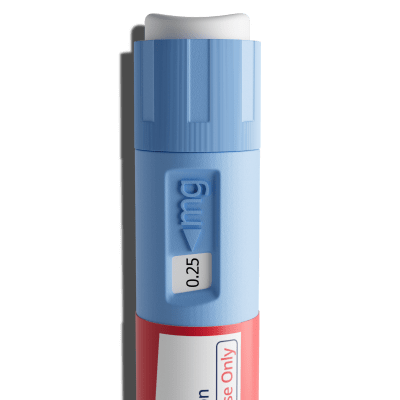Content
View weight loss medications
How to Lose Fat and Gain Muscle: Optimizing Body Composition

Persuasive headlines and social expectations can pressure men to achieve a certain body type, which isn’t helpful. These pressures suggest urgency and ease that simply aren’t accurate. If you’re wondering how to lose fat and gain muscle, we can guide the way — just know it’s not a quick process or a one-and-done thing.
The truth is, optimizing body composition and weight loss are long games that require consistency and patience. But when you focus on the right things, you can gain muscle and lose fat in a healthy, sustainable way — and we’re here to help.
Below, we’ll cover the best way to lose fat and gain muscle at the same time, prioritizing things like protein intake, nutrient density, strength and cardio workouts and getting enough rest.
Content
Yes, it’s possible to simultaneously burn fat and build muscle, although it can be challenging. The process is often referred to as body recomposition. Achieving this dual goal calls for strength and resistance training, cardio exercise and solid nutrition.
Resistance training helps build muscle mass while increasing metabolic rate (how fast your body burns calories), which can support fat loss. Doing cardio helps burn calories and fat, contributing to overall fat loss.
When making a plan for how to lose fat and gain muscle, a focus on getting enough protein to support muscle growth and repair is key while prioritizing the nutritional quality of the food you eat.
Contrary to popular belief, it’s physiologically impossible to turn fat directly into muscle (see also: turning straw into gold).
Fat and muscle are two distinct tissue types with different structures and functions. However, it’s possible to lose fat while simultaneously building muscle through a combination of exercise, nutrition and lifestyle changes.
Listen, if there was an easy solution to turn fat into muscle, more people would be doing it. When planning how to gain lean muscle and lose fat, getting realistic with expectations is the first order of business here.
Resistance training exercises, such as weightlifting or bodyweight exercises, can stimulate muscle growth (and prevent lean muscle loss). They can also give your metabolism a boost, aiding in fat loss.
Additionally, eating nutrient-rich meals with lean protein, healthy fats and fiber-rich carbohydrates — while being mindful of portions — supports muscle growth and fat loss.
Over time, these habits can help foster muscle mass increase and a reduced body fat percentage.
Want to know your body mass index (BMI)? Check out the Hims BMI Calculator.
Body composition and body recomposition are distinct concepts in the world of health and fitness. And if you’ve never heard of the latter, you’re not alone — so let’s define the two.
What Is Body Composition?
Body composition is the proportion of fat, muscle, bone and other tissues in your body. It’s typically measured using body fat percentage, which assesses the amount of fat on your body relative to your lean mass.
A healthy body composition for men varies among individuals.
Generally, there’s a healthy distribution of body fat where the excess is primarily stored around your vital organs (to protect them), with less around the abdomen and waist (where most men store extra fat). Muscle mass, on the other hand, is a significant portion of your overall weight.
What Is Body Recomposition?
Body recomposition is the process of reducing body fat and increasing lean muscle mass at the same time. This is what we mean when we talk about how to lose fat and gain muscle.
While body composition focuses on your current body tissue percentages, body recomposition involves actively changing this makeup through targeted exercise, nutrition and lifestyle adjustments.
3 Ways to Safely Lose Fat
So without further ado, you’re probably ready for some actionable tips around how to safely reduce body fat percentage and increase lean muscle mass.
If burning your fat stores is a top priority, a few tried-and-true things can help.
1. Focus on Nutrient Density
When talking about weight loss, we tend to focus on the whole “calories in versus calories out” concept that emphasizes creating a calorie deficit.
While it’s true your body needs a certain range of calories to gain, lose and maintain a healthy body weight, there’s more to weight loss and fat burning.
Instead of scrutinizing calorie intake, focus on nutrient density. This means prioritizing the nutritional quality of the foods you’re eating (and beverages you’re drinking) versus just looking at the calorie content.
After all, something can be low in calories but also low in nutritional quality (we’re looking at you, “diet” brownie bar).
Two main ways to boost the nutrient density of your meal plan include:
Eat more plant foods. This includes fruits, vegetables, legumes (beans, peas and lentils), whole grains, nuts and seeds. These are naturally lower in calories per serving than meat and dairy and high in nutrition. They’ll also keep you fuller longer, subsequently helping you eat less if you’re trying to lose weight.
Eat fewer highly processed foods. Try to reduce your intake of ultra-processed foods, such as packaged snacks made with refined white flour, donuts, cookies, candy, soda, fruit juice, hot dogs and fast food items.
Consider Calorie Cycling
Getting enough calories is vital for achieving body recomposition goals. Rather than focusing on creating a calorie deficit, you might consider calorie cycling.
Calorie cycling involves alternating how many daily calories you eat throughout the week. It can aid in weight loss for men by preventing metabolic adaptation (when your body doesn’t burn as much energy to preserve fat and muscle) and weight loss plateaus.
Cycling a higher and lower number of calories can help your body stay responsive to caloric deficits (essentially meaning it won’t get too comfortable because it can’t predict what’s next), enhancing fat loss while preserving muscle mass.
For instance, on a higher-calorie day, you might focus more on nutrient-dense foods to fuel your workouts and support muscle-building and repair.
On days with fewer calories, you might eat more fruits, veggies, healthy fats and lean proteins and fewer carbs (as these tend to contribute a more significant amount of calories per serving).
This approach may help limit some of the negative side effects associated with prolonged calorie restriction. It can also help prevent you from feeling physically deprived of food — the last thing anyone wants.
2. Boost Your Cardio
Fitness experts recommend aiming for at least 150 minutes of moderate-intensity exercise a week or 75 minutes of vigorous-intensity aerobic exercise to stay healthy. For gradual weight loss, a goal of 200 to 300 minutes per week is sometimes suggested.
This is a lot. No one expects you to hit 300 minutes a week (or even half that) if you’re just getting started. Do what you can and work your way up.
Cardiovascular exercise is important for fat loss in men because it boosts your metabolism and helps you burn more calories.
This type of movement helps reduce visceral fat (the type of fat stored around your stomach and organs), which is linked to a higher risk for heart disease and type 2 diabetes.
What’s more, exercise supports cardiovascular system health, increases endurance and releases feel-good hormones called endorphins.
Here are some great ways to add more cardio to your life:
Taking your dog for a jog around the neighborhood
Joining a community running club
Meeting up with a friend to play tennis
Joining a high-intensity interval training (HIIT) group or another fitness class
Using cardio gym machines like a stair climber, elliptical, stationary bike, row machine or treadmill
Varied intensity can be key when working out. If you don’t like high-intensity exercise all the time, that’s okay — research shows that aerobic exercise (pretty much anything that gets your heart rate up) is just as effective for weight loss if you do it regularly.
3. Incorporate Strength Training
Strength training helps break down muscle fibers, which then repair to become bigger and stronger over time.
Besides cardio workouts, weight training is critical for fat loss in men because of its unique ability to increase lean muscle mass and boost metabolism.
Unlike aerobic activity alone, strength training workouts not only burn calories during the workout but also boosts your metabolism after exercise. This means you’ll burn more calories throughout the day.
Studies have found that several weeks of consistent resistance training can boost your metabolic rate by roughly seven percent.
Building muscle through strength training also helps support body recomposition, leading to a leaner and more toned appearance. Furthermore, maintaining muscle mass is crucial for sustainable fat loss.
Here are some ways to work all your muscle groups:
Lifting free weights or dumbbells
Using weight machines at the gym, like the leg press, shoulder press or tricep extender
Trying resistance bands
Doing bodyweight exercises, like push-ups, tricep dips, squats and pull-ups
Does gaining muscle burn fat? Not directly, but muscle tissue uses more energy than fat tissue, which promotes a higher resting metabolic rate (aka you burn calories when you’re not working out).
3 Ways to Gain Muscle Safely
While you’re busy burning off extra fat, there are a few other things you can prioritize in your weight loss journey to gain muscle mass safely and effectively over time.
1. Eat More Protein
All the macronutrients — protein, fats and carbs — are essential for health and wellness. But a high-protein diet can be especially helpful when trying to build more muscle.
The Dietary Guidelines for Americans recommends 56 grams of protein a day for adult men. However, this is the basic amount needed to prevent losing muscle. To promote weight loss, you’ll need to boost your protein intake.
As for how much protein to add, this can vary among men. Some research suggests 1.2 to 1.6 grams (or more) of daily protein per kilogram of body weight — or at least 25 to 30 grams of protein per meal to improve weight management.
Some good protein sources include:
Lean meats
Poultry
Fish
Eggs
Low-fat dairy products
Legumes (beans, peas and lentils)
Soy foods like tofu and tempeh
Nuts and seeds
Protein powder supplements
If you need guidance on how much protein to eat and how to incorporate these into a healthy meal plan, your best bet is to check with a registered dietitian or nutritionist.
What Does Protein Do for Muscles?
Protein is necessary for muscle repair, growth and maintenance. It provides the essential amino acids (the ones we can’t make ourselves and have to get through food) for building and repairing muscle tissue.
Eating more protein also helps preserve lean muscle mass (preventing muscle loss) while you’re trying to lose fat. Protein has a higher thermic effect than carbs and fats. This means your body uses more energy digesting and using protein than it does the other macronutrients.
For body recomposition, more protein supports small additional gains in lean body mass and gains in lower-body muscle strength when you pair it with resistance training.
2. Try Progressive Overload
Despite its torturous-sounding name, progressive overload is a foundational principle of strength training to increase muscle mass.
It involves continually challenging your muscles by gradually increasing the resistance, volume or intensity of workouts over time to support your fitness goals.
So, by “progressively overloading” your muscles, you stimulate muscle fibers to adapt and grow stronger, increasing overall muscle mass. This also helps prevent a muscle gain (or weight loss) plateau because your body is regularly challenged and redirected.
Some ways you can do this:
Increasing the amount of weight you’re lifting (slightly bigger dumbbells or a heavier setting on the weight machines, for instance)
Adding more reps (e.g., if you’ve been doing 10 reps of an exercise, increase it to 12 or 15)
Increasing resistance (such as switching to a tighter resistance band)
Reducing rest intervals between sets (if you’ve been resting for one minute between sets, you might reduce it to 45 seconds)
These gradual changes help challenge your muscles in a way that ensures ongoing muscle stimulation and adaptation, maximizing gains in strength and muscle size.
If you need guidance, a personal trainer can be a great resource when designing a training program.
3. Get Adequate Rest and Recovery
We’ve been talking about exercise and movement quite a bit, but rest is equally important for successful body recomposition — especially if you’re regularly challenging yourself with a progressive overload approach.
Adequate rest allows your body to recover, repair and rebuild muscle tissue following your workouts.
During rest periods, muscles undergo a process called hypertrophy. This means they adapt and grow stronger in response to the stress they’ve been placed under with exercise and strength training.
Not allowing your body enough rest time can hinder this process (and your overall progress).
Rest is vital for other reasons too. It helps prevent mental and physical burnout, which can make it harder to stay consistent.
It also helps prevent overtraining that can otherwise increase your risk of injuries. Beyond that, being well-rested also gives you the energy and focus to stay on track as much as possible.
Here are some ways to ensure you’re getting enough rest and recovery time:
Aim for seven to nine hours of minimally-interrupted sleep per night.
Go to bed and wake up at the same time every day.
Implement strategies like foam rolling, stretching or using a massage gun to help relax your muscles.
Include at least one full rest day as part of your weekly routine.
Weight loss and muscle gain don’t always work cohesively. Body recomposition can become a convoluted mess of mixed information and societal pressure — two things that aren’t going to help with how to gain muscle while losing fat.
Here’s what to remember when beginning a body recomposition journey:
It’s a multifactorial process. Simultaneously losing fat and building muscle is possible, but it can be challenging. Doing so requires a mix of strength and resistance training, cardio exercise and a solid nutrition plan. Sometimes, weight loss medications may also be appropriate.
Nutrition and physical activity are key. What you eat and how you move your body are at the top of the list when it comes to changing your body composition. Consider how you can prioritize nutritional quality, protein intake, progressive overload at the gym and — yes — even rest to support your progress.
Patience, grace and consistency are essential. Targeted weight loss and quick fixes for body recomposition aren’t reality. Start where you are, build a rhythm that makes sense and is sustainable for you, and be as consistent as possible. You’ve got this!
Take our free assessment to find a weight loss treatment plan starting where you are right now. You might also be interested in exploring weight loss medications as part of your overall plan.
23 Sources
- Barakat, Christopher MS, ATC, CISSN1; Pearson, Jeremy MS1; Escalante, Guillermo DSc, MBA, ATC, CSCS, CISSN2; Campbell, Bill PhD, CSCS, FISSN3; De Souza, Eduardo O. PhD1. Body Recomposition: Can Trained Individuals Build Muscle and Lose Fat at the Same Time?. Strength and Conditioning Journal 42(5):p 7-21, October 2020. https://journals.lww.com/nsca-scj/fulltext/2020/10000/body_recomposition__can_trained_individuals_build.3.aspx
- Bellicha, A., van Baak, M. A., Battista, F., Beaulieu, K., Blundell, J. E., Busetto, L., Carraça, E. V., Dicker, D., Encantado, J., Ermolao, A., Farpour-Lambert, N., Pramono, A., Woodward, E., & Oppert, J. M. (2021). Effect of exercise training on weight loss, body composition changes, and weight maintenance in adults with overweight or obesity: An overview of 12 systematic reviews and 149 studies. Obesity reviews : an official journal of the International Association for the Study of Obesity, 22 Suppl 4(Suppl 4), e13256. https://doi.org/10.1111/obr.13256
- Kim J. Y. (2021). Optimal Diet Strategies for Weight Loss and Weight Loss Maintenance. Journal of obesity & metabolic syndrome, 30(1), 20–31. https://doi.org/10.7570/jomes20065
- Ivanova, S., Delattre, C., Karcheva-Bahchevanska, D., Benbasat, N., Nalbantova, V., & Ivanov, K. (2021). Plant-Based Diet as a Strategy for Weight Control. Foods (Basel, Switzerland), 10(12), 3052. https://doi.org/10.3390/foods10123052
- Crimarco, A., Landry, M. J., & Gardner, C. D. (2022). Ultra-processed Foods, Weight Gain, and Co-morbidity Risk. Current obesity reports, 11(3), 80–92. https://doi.org/10.1007/s13679-021-00460-y
- Davoodi, S. H., Ajami, M., Ayatollahi, S. A., Dowlatshahi, K., Javedan, G., & Pazoki-Toroudi, H. R. (2014). Calorie shifting diet versus calorie restriction diet: a comparative clinical trial study. International journal of preventive medicine, 5(4), 447–456. https://pubmed.ncbi.nlm.nih.gov/24829732/
- Celik, O., & Yildiz, B. O. (2021). Obesity and physical exercise. Minerva endocrinology, 46(2), 131–144. https://doi.org/10.23736/S2724-6507.20.03361-1
- Swift, D. L., Johannsen, N. M., Lavie, C. J., Earnest, C. P., & Church, T. S. (2014). The role of exercise and physical activity in weight loss and maintenance. Progress in cardiovascular diseases, 56(4), 441–447. https://doi.org/10.1016/j.pcad.2013.09.012
- Jakicic, J. M., Clark, K., Coleman, E., Donnelly, J. E., Foreyt, J., Melanson, E., Volek, J., Volpe, S. L., & American College of Sports Medicine (2001). American College of Sports Medicine position stand. Appropriate intervention strategies for weight loss and prevention of weight regain for adults. Medicine and science in sports and exercise, 33(12), 2145–2156. https://doi.org/10.1097/00005768-200112000-00026
- Chiu, C. H., Ko, M. C., Wu, L. S., Yeh, D. P., Kan, N. W., Lee, P. F., Hsieh, J. W., Tseng, C. Y., & Ho, C. C. (2017). Benefits of different intensity of aerobic exercise in modulating body composition among obese young adults: a pilot randomized controlled trial. Health and quality of life outcomes, 15(1), 168. https://doi.org/10.1186/s12955-017-0743-4
- Wang, H., Cheng, R., Xie, L., & Hu, F. (2024). Comparative efficacy of exercise training modes on systemic metabolic health in adults with overweight and obesity: a network meta-analysis of randomized controlled trials. Frontiers in endocrinology, 14, 1294362. https://doi.org/10.3389/fendo.2023.1294362
- Kramer, A. M., Martins, J. B., de Oliveira, P. C., Lehnen, A. M., & Waclawovsky, G. (2023). High-intensity interval training is not superior to continuous aerobic training in reducing body fat: A systematic review and meta-analysis of randomized clinical trials. Journal of exercise science and fitness, 21(4), 385–394. https://doi.org/10.1016/j.jesf.2023.09.002
- Westcott, Wayne L. PhD. Resistance Training is Medicine: Effects of Strength Training on Health. Current Sports Medicine Reports 11(4):p 209-216, July/August 2012. https://pubmed.ncbi.nlm.nih.gov/22777332/
- McPherron, A. C., Guo, T., Bond, N. D., & Gavrilova, O. (2013). Increasing muscle mass to improve metabolism. Adipocyte, 2(2), 92–98. https://doi.org/10.4161/adip.22500
- Dietary Guidelines for Americans, 2020-2025. USDA. Available from: https://www.dietaryguidelines.gov/sites/default/files/2020-12/Dietary_Guidelines_for_Americans_2020-2025.pdf
- Leidy, H. J., Clifton, P. M., Astrup, A., Wycherley, T. P., Westerterp-Plantenga, M. S., Luscombe-Marsh, N. D., Woods, S. C., & Mattes, R. D. (2015). The role of protein in weight loss and maintenance. The American journal of clinical nutrition, 101(6), 1320S–1329S. https://doi.org/10.3945/ajcn.114.084038
- Tagawa, R., Watanabe, D., Ito, K. et al. Synergistic Effect of Increased Total Protein Intake and Strength Training on Muscle Strength: A Dose-Response Meta-analysis of Randomized Controlled Trials. Sports Med - Open 8, 110 (2022). https://doi.org/10.1186/s40798-022-00508-w
- Nunes, E. A., Colenso-Semple, L., McKellar, S. R., Yau, T., Ali, M. U., Fitzpatrick-Lewis, D., Sherifali, D., Gaudichon, C., Tomé, D., Atherton, P. J., Robles, M. C., Naranjo-Modad, S., Braun, M., Landi, F., & Phillips, S. M. (2022). Systematic review and meta-analysis of protein intake to support muscle mass and function in healthy adults. Journal of cachexia, sarcopenia and muscle, 13(2), 795–810. https://doi.org/10.1002/jcsm.12922
- Leidy, H. J., Carnell, N. S., Mattes, R. D., & Campbell, W. W. (2007). Higher protein intake preserves lean mass and satiety with weight loss in pre-obese and obese women. Obesity (Silver Spring, Md.), 15(2), 421–429. https://doi.org/10.1038/oby.2007.531
- Plotkin, D., Coleman, M., Van Every, D., Maldonado, J., Oberlin, D., Israetel, M., Feather, J., Alto, A., Vigotsky, A. D., & Schoenfeld, B. J. (2022). Progressive overload without progressing load? The effects of load or repetition progression on muscular adaptations. PeerJ, 10, e14142. https://doi.org/10.7717/peerj.14142
- Song, J., Park, S. J., Choi, S., Han, M., Cho, Y., Oh, Y. H., & Park, S. M. (2023). Effect of changes in sleeping behavior on skeletal muscle and fat mass: a retrospective cohort study. BMC public health, 23(1), 1879. https://doi.org/10.1186/s12889-023-16765-7
- Dáttilo, Murilo; Antunes, Hanna Karen Moreira; Galbes, Nadine Marques Nunes; Mônico-Neto, Marcos; De Sá Souza, Helton; Dos Santos Quaresma, Marcus Vinícius Lúcio; Lee, Kil Sun; Ugrinowitsch, Carlos; Tufik, Sergio; De Mello, Marco Túlio. Effects of Sleep Deprivation on Acute Skeletal Muscle Recovery after Exercise. Medicine & Science in Sports & Exercise 52(2):p 507-514, February 2020. https://pubmed.ncbi.nlm.nih.gov/31469710/
- Hirshkowitz, M., Whiton, K., Albert, S. M., Alessi, C., Bruni, O., DonCarlos, L., Hazen, N., Herman, J., Katz, E. S., Kheirandish-Gozal, L., Neubauer, D. N., O'Donnell, A. E., Ohayon, M., Peever, J., Rawding, R., Sachdeva, R. C., Setters, B., Vitiello, M. V., Ware, J. C., & Adams Hillard, P. J. (2015). National Sleep Foundation's sleep time duration recommendations: methodology and results summary. Sleep health, 1(1), 40–43. https://doi.org/10.1016/j.sleh.2014.12.010
Editorial Standards
Hims & Hers has strict sourcing guidelines to ensure our content is accurate and current. We rely on peer-reviewed studies, academic research institutions, and medical associations. We strive to use primary sources and refrain from using tertiary references. See a mistake? Let us know at blog@forhims.com!
This article is for informational purposes only and does not constitute medical advice. The information contained herein is not a substitute for and should never be relied upon for professional medical advice. Always talk to your doctor about the risks and benefits of any treatment. Learn more about our editorial standards here.
Craig Primack, MD, FACP, FAAP, FOMA
Dr. Craig Primack MD, FACP, FAAP, FOMA is a physician specializing in obesity medicine.
He completed his undergraduate studies at the University of Illinois and subsequently attended medical school at Loyola University — The Stritch School of Medicine.
He completed a combined residency in Internal Medicine and in Pediatrics at Banner University- Phoenix, and Phoenix Children's Hospital. He received post-residency training in Obesity Medicine and is one of about 7,000 physicians in the U.S. certified by the American Board of Obesity Medicine.
In 2006, Dr. Primack co-founded Scottdale Weight Loss Center in Scottsdale, Arizona, where he began practicing full-time obesity medicine. Scottsdale Weight Loss Center has grown since then to six obesity medicine clinicians in four locations around the greater Phoenix Metropolitan area.
From 2019–2021, he served as president of the Obesity Medicine Association (OMA), a society of over 5,000 clinicians dedicated to clinical obesity medicine. He has been on the OMA board since 2010, currently serving as ex-officio trustee.
Dr. Primack routinely does media interviews regarding weight loss and regularly speaks around the country educating medical professionals about weight loss and obesity care. He is co-author of the book, “Chasing Diets.”
Publications
Bays, H., Lazarus, E., Primack, C., & Fitch, A. (2022). Obesity pillars roundtable: Phentermine — Past, present, and future. Obesity Pillars, 3, 100024. https://www.sciencedirect.com/science/article/pii/S2667368122000158
Primack C. (2021). Obesity and Sleep. The Nursing clinics of North America, 56(4), 565–572. https://www.sciencedirect.com/science/article/abs/pii/S002964652100075X?via%3Dihub
Primack C. (2018). A review and critique of published real-world weight management program studies. Postgraduate medicine, 130(6), 548–560. https://www.tandfonline.com/doi/abs/10.1080/00325481.2018.1498280
Swanson, E., & Primack, C. (2017). Behavior Modification: A Patient and Physician's Perspective. Advances in therapy, 34(3), 765–769. https://www.ncbi.nlm.nih.gov/pmc/articles/PMC5350202/
Primack, C. (2012). Two New Drugs Approved for Weight Loss Treatment. Bariatric Times, 9(8), 11. https://bariatrictimes.com/two-new-drugs-approved-for-weight-loss-treatment/




